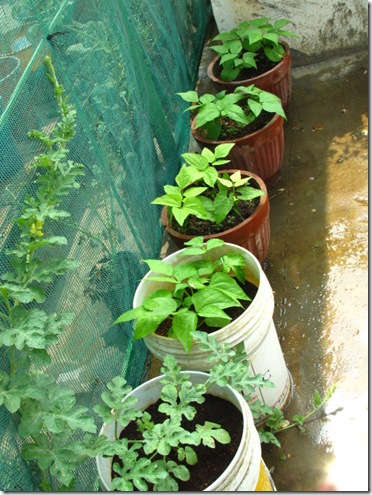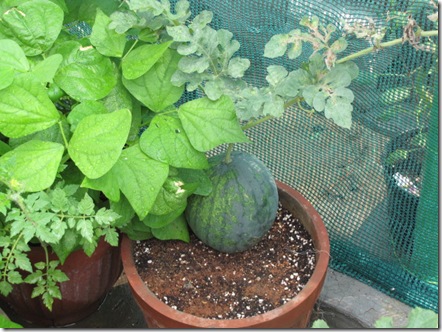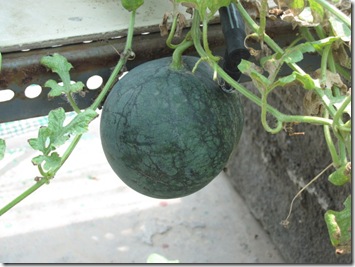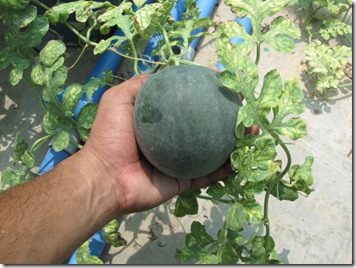Index | Search | Home
Hordeum vulgare L.
Poaceae
Barley Source: James A. Duke. 1983. Handbook of Energy Crops. unpublished.
- Uses
- Folk Medicine
- Chemistry
- Toxicity
- Description
- Germplasm
- Distribution
- Ecology
- Cultivation
- Harvesting
- Yields and Economics
- Energy
- Biotic Factors
- Chemical Analysis of Biomass Fuels
- References
Barley is the fourth most important cereal in the United States, but ca 50% is used for livestock fodder, 37% for the brewing industry (80% for beer, 14% distilled alcohol, 6% malt syrup). Beer is no johnny-come-lately; Clay documents at least 8000 years old have depicted barley beer making. Until the sixteenth century, barley flour was used instead of wheat to make bread (Bukantis and Goodman, 1980). Winter barley furnishes nutritive pasturage without seriously reducing yields. In India, a cooling drink called sattu is made from barley. Barley flour is produced by milling the grains or as a by-product in pearl barley manufacturing. Flour of good quality obtained by milling pearl barley. Barley flour unsuitable for use alone in bread-making; used with 10–25% wheat flour for various purposes. Ashes of leaves used in Patna (India) in preparation of cooling sherbets. High protein barleys are generally valued for food and feeding, and starchy barley for malting. Two-rowed barley contains more starch than six-rowed types (Reed, 1976).
According to Hartwell (1967–1971), barley is used in folk remedies for cancer (esp. of stomach and uterus), and tumors (of the abdomen). The seed meal is a folk remedy for cancer of the uterus, inflammatory and sclerotic tumors and gatherings, and parotid gland tumors. The seed flour is used for condylomata of the anus, tumors behind the ears, scirrhus of the testicles and spleen, and whitlows. Cataplasms derived from the seed are also believed to help breast cancers (Hartwell, 1967–1971). Reported to be antilactagogue, demulcent, digestive, diuretic, ecbolic, emollient, expectorant, febrifuge, and stomachic, barley is a folk remedy for bronchitis, burns, cancer, catarrh, chest, chilblains, cholecystosis, cholera, cough, debility, diarrhea, dyspepsia, fever, inflammation, measles, phthisis, puerperium, sores, and urogenital ailments (Duke and Wain, 1981). Other folk medicinal details are presented in
Medicinal Plants of the Bible (Duke, 1983a). Barley grain is demulcent and easily assimilable, and used in dietary of invalids and convalescents. Pearl barley is form commonly used. Powdered parched grains used in form of a gruel for painful and atonic dyspepsia. Barley water with honey prescribed for bronchial coughs, and with gum arabic used for soothing irritations of the bladder and urinary passage. Iranians have a saying, "What has disease to do with men who live upon barley-bread and buttermilk?"
Per 100 g, the grain is reported to contain 327–349 calories, 9.9–13.7 g H
2O, 8.2–10.5 g protein, 1.0–2.1 g fat, 71.8–78.8 g total carbohydrate, 0.5–6.5 g fiber, 0.9–2.5 g ash, 16–61 mg Ca, 189–378 mg P, 2.0–17.9 mg Fe, 3–4 mg Na, 160–562 mg K, 0–10
mg
b-carotene equivalent, 0.12–0.38 mg thiamine, 0.05–0.2 mg riboflavin, 3.1–7.2 mg niacin, and little or no ascorbic acid (Duke and Atchley, 1983). Israeli studies of the grain showed 89.7% DM of which 12.0% was CP, 5.2% CF, 6.1% ash, 2.0% EE, 74.7% NFE, 0.06% Ca, and 0.42% P, compared with 88.9% DM for the bran with 13.4% CP, 11.2% CF, 4.2% ash, 3.3% EE, 67.9% NFE, 0.33% Ca, and 0.67% P (Gohl, 1981). Of the protein N in barley proteins, 6.0–22.0% is in arginine, 2.2–4.3% histidine, 0.8–7.9% lysine, 1.5–2.7% tyrosine, 0.6–1.3% tryptophane, 2.1–3.6% phenylalanine, 0.9–2.6% cystine, 0.8–1.4% methionine, 1.9–3.4% threonine, 4.5–5.8% leucine, 2.2–4.1% isoleucine, 3.5–5.8% valine, and 1.7–10.7% glycine (C.S.I.R., 1948–1976). Raw barley contains catalase, cellobiase, cytaste, diastase, lichenase, mannase, mannobiase, oxidase, peroxidase, and phytase with active proteolytic enzymes appearing only at germination. Based on 63–65 analyses of barley hay, Miller (1958) reported 84.3–93.6 (mean 87.3)% DM, 7.3–15.2% CP (mean 8.9), 1.5–3.3% EE (mean 2.2), 19.2–32.4% CF (mean 26–4), 7.2–10.5% ash (mean 7.8), and 45.8–64.4% NFE (mean = 54.7). The grains also contain 96–125 mg choline, 1.7–2.1 mg vit. E, and 395–620
mg pantothenic acid/100 g, as well as vit. D and folic acid.
Science 205 (Aug. 24, 1979, p. 768) reported that 70% of 158 European beers analyzed contain 1–68 ppb NDMA (N-nitrosodimethylamine), dark beer containing more than light beer. American beer testing (some foreign, some domestic) showed only 0.7–7 ppb. Both concluded that the NDMA may be an artifact produced in drying or kilning the barley malt. Other chemical details can be found in two fine source books, the Wealth of India (C.S.I.R., 1948–1976) and Hager's Handbook (List and Horhammer, 1969–1979).
Annual grass; stems erect, stout, tufted, 60–120 cm tall; leaves few, alternate, linear-lanceolate, the upper one close to the spike, blades up to 25 cm long, about 1.5 cm broad; sheath smooth, striate; ligules short, membranous; spikes terminal, linear-oblong, compressed, up to 20 cm long, densely flowered; spikelets sessile, arranged in threes on two sides of a flattened rachis, all fertile (6-rowed types), or lateral ones barren and occasionally rudimentary (2-rowed types); glumes 2, narrow, small, short-awned, enclosing 3 spikelets; lemma lanceolate, 5-ribbed, tapering into a long straight or recurved awn; palea slightly smaller than the lemma with margins inflexed; stamens 3; caryopsis ellipsoid, about 0.9 cm long, short-pointed, grooved on inner face, smooth, free or adherent to palea, or both lemma and palea. Seeds 30,870/kg (Reed, 1976).
Reported from the Near Eastern, Mediterranean, and China-Japanese Centers of Diversity, barley, or cvs thereof, is reported to tolerate alkali, aluminum, disease, drought, frost, fungus, grazing, hydrogen flouride, high pH, heat, insects, low pH, mildew, nematodes, rusts, smog, sulfur dioxide, smut, virus, and waterlogging (Duke, 1978). The salt and drought tolerance makes barley particularly attractive for desert scenarios. Arizona test lines can yield 2.5 MT with 3% salt water, if first sprouted with rain water or up to 1% salt water. Ca 130 cvs are grown in the United States (Foster, 1981), and many more have been developed in foreign countries. These differ in being 6-rowed or 2-rowed, adherence of lemmas to caryopsis, husked and huskless, and according to grain color. Six-rowed husked types are grown most in India. All cultivated types of barley have 7 pairs of chromosomes, they are self-fertile and natural crossing is less than 0.5% in most types. Four main types of barley are recognized: Manchurian types—6-rowed, spring growth habit, originally from Manchuria and neighboring regions, now mostly grown in Upper Mississippi Valley states of Great Lakes and Canada; Coast Types—6-rowed, spring habit, North African in origin, grown principally in California and southwestern United States, usually fall and winter sown; Hannchen types, 2-rowed, of European origin, used for malting; Compana-Smyrna types—2-rowed, of Turkish origin, well-suited for areas of marginal rainfall, principally grown on Pacific Coast, intermontane region of West and to some extent on Great Plains. The Tennessee Winter group, of uncertain origin, probably Balkan-Caucasus region or Korea, 6-rowed, winter growth habit, is grown mainly in Southeastern States, Great Lakes, Pacific Northwest, and in intermontane region of western United States. (2
n = 14, 28, 42.) (Reed, 1976).
Probably native to Middle East, from Afghanistan to northern India; now widely cultivated in all temperate regions from Arctic Circle to high mountains in the tropics. The earliest remains so far discovered are from Iran (ca 7900
BC), but we still do not know that it originated there or in Egypt, Etiopia, the Near East or Tibet (Foster, 1981).
Ranging from Boreal Moist to Rain through tropical Very Dry Forest Life Zones, barley is reported to tolerate annual precipitation of 1.9 to 17.6 dm (mean of 161 cases = 7.4), annual temperature of 4.3 to 27.5°C (mean of 161 cages = 12.1), and pH of 4.5 to 8.3 (mean of 138 cases = 6.5). Bukantis and Goodman note that barley has a wider ecological range than any other cereal grain. Barley has a shorter growing season than wheat or oats and can be grown at higher latitudes. Some varieties are grown in tropical India, in hot districts of Africa, and as far north as 70deg.N in Norway. In the United States it is grown in the cooler climates. Among the cvs, there are adaptations to almost any ecological situation, but most do not thrive in the humid tropics. Some forms survive under extreme conditions and mature in 60–70 days. Due to its ability to ripen at rather high temperatures, the southern limit for its cultivation is 10°N of Equator. Barley is not particularly winter-hardy, so is grown as a spring crop. In areas with comparative mild winters as the Mediterranean and India, it is grown as a winter crop. Average temperature during growing period is 15.5–17°C, preferably sunny and moderately rainy. Grown on soils which are too light or otherwise unsuitable for wheat cultivation; does well on light or sandy loam soil. Highest grades of barley are grown on fertile deep loam soils with pH of 7–8. Soils lower than pH 6 may induce aluminum toxicity. For malting barleys, soils should not contain too much nitrogen.
Seed sown broadcast or in shallow furrows about 22 cm apart, dropped through a drill. Depth of sowing 1.3–4.5 cm. Seeding rates vary from 67 to 101 kg/ha. Crop requires very little interculture or weeding. In dry areas 2–3 waterings are required after sowing. In India, seed sown in Oct.–Nov., and harvested by late March or early April. In Punjab, sowing as late as early Jan. Crop may be raised under both rainfall and irrigated conditions. Crop grown pure, or in mixtures with gram, pea, lentil, berseem, rape, mustard, or linseed. Sometimes grown with wheat. Irrigation increases yields, irrigated crops containing less nitrogen. A light harrowing after first irrigation when crop is about 20 cm tall, gives up to 10% higher yields. Barley is usually grown without any Special manuring. However, an application of fertilizers containing nitrogen, phosphorus, or potash, in various combinations, influence yield and quality of grain. Additional nitrogen increases yield of straw and grain, but in larger doses, nitrogen increases the protein content and affects its brewing quality. Phosphate fertilizers lower the protein content considerably and influence formation and ripening of grain. Lodging, when it occurs, causes loss in quality and yield of crop, and may be due to poor root system, disease infection, weak straw, or storm damage.
Dry warm weather is favorable for grain ripening. Barley is ready for harvest in about 4 months after sowing; some varieties in 60 days. Plants are either pulled out or cut with sickles and sheaves stacked for about a week or more. Grain is threshed out by beating with sticks or trampled by oxen (India). Barley plants are fed green or as hay to livestock. In some areas, stalks are cut 2 or 3 times without marked injury to grain yield. For hay, plants are cut while still green after heads are well formed. Dry stalks and leaves obtained during threshing are also useful as cattle feed. Barley, like wheat, is stored in bulk or in bags or in underground pits in bulk. Straw is used as roughage for livestock and bedding, for making hats and packing and for manufacture of cellulose pulp. Barley fed to stock alone or mixed with other grains, usually crushed or ground to meal and mixed with other foodstuffs, particularly useful for pigs and horses, less so for cattle.
Average yields are 532–1,175 kg/ha. Improved types exceed 3 MT/ha. Irrigated yields average 47–132% more than unirrigated yields. Highest yields obtained in intensively cultivated areas of Northwestern Europe and Japan, with improved cvs and heavy application of fertilizer. In North America, where cultivation is extensive rather than intensive, average yields are much lower than in Europe. In India, yields range from 530–1,100 kg/ha, compared in 1955–1956 to about 3,600 in Denmark, 3,200 in England, 2,700 in Germany, 2,400 in Japan, 2,000 in France, and 1,500 in the United States. In 1979, the world low production yield figure was 107 kg/ha in Jordan, the international production yield was 1,761 kg/ha, and the world high production yield was 36,667 in U.A.E (FAO, 1980a). In 1969, the United States harvested about 3,800,000 hectares in barley, worth about $370,000,000, indicating returns of about $100 per hectare. In 1977, barley was harvested on 3,840,000 hectares in the US, with yields averaging 2,360 kg/ha for production of ca 9 million MT (Foster, 1981). United States, USSR, China, Canada, India, and countries bordering the Mediterranean are the major barley producers. Chief importers are United Kingdom, Germany, Netherlands, Belgium, Argentina, and United States. Most countries producing barley use most of their grain for domestic purposes. In 1969, United States imported about 5,796 MT of malt from Australia, West Germany, Austria, and England. World production in 1976 totalled ca 178 million MT from 86 million ha. The USSR led with 40% of world production followed by Canada, China, France, and the US. Over a recent span of 25 years, barley hectarage increased by over 80%, illustrating barley's increasing economic importance.
According to the phytomass files (Duke, 1981b), annual productivity ranges from 0 to 25 MT/ha, rounded to the nearest MT. Barley straw is usually calculated at 1.5 times production; chaff at 0.25 times production. The highest phytomass figure I have for barley is 25 MT/ha/yr. Research reiterated by Palz and Chartier (1980) indicated that straw from winter wheat, summer wheat, winter barley, summer barley, winter rye, and oats all gave calorific values based on moisture-free dry matter of 17.04 (±5%) MJ/kg, or based on air dry matter, 15.06 (±3.5%) MJ/kg. High N fertilization raised calorific values by ca 425 K.J/kg. Increasing moisture content from 14 to 20% reduced calorific value by 9%. Since straw available as feedstock is normally air-dry, a calorific value of 15 MJ/kg is assumed by Palz and Chartier (1980) for all cereal varieties and species. The assumed grain straw ratio for:
wheat is 1.23
barley is 1.45
oats is 1.16
rye is 0.70
other cereals is 1.10
Elsewhere Palz and Chartier assume 17.5 MJ/kg as the typical energy value for the dry matter of herbaceous materials. Reducing Kvech's (1979) numbers by 10% to convert approximately to DM yields for residues, we have the following figures for Kourim, Czechoslovakia, rounded to the nearest MT:
Medicago sativa, 7;
Trifolium pratense, 4;
Vicia faba, 4;
Avena sativa, 3;
Lolium perenne, 3;
Secale cereale, 3;
Trifolium repens, 3;
Triticum aestivum, 3;
Brassica rapa, 2;
Hordeum vulgare, 2;
Phacelia tanacelifolia, 2;
Beta vulgaris, 1;
Sinapis alba, 1;
Solanum tuberosum, 1. The harvest index (H.I.) of cereals in general is ca 0.36, meaning that 64% of total above ground crop production is residue, at least 1/3 of which should be left in the field. 'Prior' barley has the H.I. ranging from 0.48 to 0.41 with increasing N fertilizer levels. Wheat usually runs about 0.30 to 0.35 H.I. Rice often has a high H.I., while grain sorghum generally has a low H.I. The 'Green Revolution' cereals with short straw and high grain yields have relatively high H.I. Biomass engineers might prefer a low H.I. The estimated cost of ethanol and methanol ftom cereal grains is $0.35 per liter, and $0.16 per liter; the overall energy efficiency, i.e. the ratio of the energy value of the gross liquid fuel output to the total energy inputs including feedstocks is 0.34 for ethanol and 0.40 for methanol. For each ton of ethanol produced from cereal grains, there is another ton of dry distiller's residue, valued in the US as animal feed (Stewart et al., 1979). All the energy budgets presented by Bukantis and Goodman (1980) show favorable output/input ratios (2.1 to 4.9). Barley yields of 1,200 kg/ha following cropping in central Idaho were energetically equivalent to ca 4 million kcals/ha from inputs closer to 2 million (144,000 for machinery, 335,000 for gasoline, 403,000 for diesel, 242,000 for seed, 731,000 for N, 87,000 for herbicide, and ca 37,000 for transportation. The highest output:input ratio was reported for barley following fallow in south central Montana, where barley yields of 2,330 kg/ha, equivalent to ca 8 million kcals/ha, require less than 2,000,000 kcals/ha energetic input. In most energy budgets fertilizer was the biggest item. Nitrogen alone accounted for more than 1/3 of the energy budget of irrigated barley in central Idaho with yields of 3,620 kg equivalent to 12,600,000 kcal/ha from inputs of 2,950,000 kcals (1,44,000 for machinery, 342,060 for gasoline, 441,066 for diesel, 435,000 for seed, 1,120,000 for N, 92,100 for phosphate, 319,000 for herbicide, and 54,200 for transportation).
Many fungi attack barley and some cause serious damage in some areas. Agricultural agents should be consulted as to methods for control. Those reported on barley include the following species:
Alternaria tenuis, Ascochyta hordei, Aspergillus minutus, Botrytis cinerea, Calonectria graminicola, Camarosporium umbonatum, Candida variabilis, Cephalosporium curtipes, C. gramineum, Cephalothecium roseum, Cercosporella herpotrichoides, Cerebelia andropogonis, Cladosporium herbarum, Claviceps purpurea, Cochliobolus sativus, Corticium gramineum, C. solani, Cryptoascus graminis, Curvularia geniculata, Dendryphion laxum, Drechslera graminea, D. teres (Helminthosporium teres, Pyrenospora teres), Erysiphe graminis f. sp.
hordei, Fusarium acuminatum, F. aquaeductum, F. avenaceum, F. concolor, F. culmorum, F. equiseti, F. graminearum, F. heterosporum, F. oxysporum, F poae, F. redolens, F. roseum f.
cerealis, F. sambucinum and var.
coeruleum, F. scirpi, F. solani, F. sporotrichioides, Gibberella saubinetti, G. zeae, Griphosphaeria nivalis, Helminthosporium oryzae, H. sativum, H. sorokinianum, H. teres, H. tetramera, H. zonatum, Heterosporium hordei, Lagena radicicola, Leptosphaeria herpotrichoides, Linocarpon cariceti, Macrophoma hennebergii, Marssonia graminicola (Rhynchosporium secalis), Monilia sitophila, Mucor spp
., Mycosphaerella hordeicola, M. tassiana, M. tulasnei, Nigrospora sphaerica, Oidium monilioides, Olpidiaster radicis, Ophiobolus cariceti, O. graminis, O. herpotricus, Paecilomyces varioti, Papularia sphaerosperma, Penicillium spp., Phoma glomerata, Pleospora trichostoma, Puccinia coronata and f. sp.,
secalis, P. glumarum and f. sp.
hordei, P. graminis and several f. spp.
, P. anomala, P. hirsutum, P. hordei, P. kapuscinski, P. purpurogenum, P. rubigovera (P. recondita), P. sanguineum, Pullularia pullulans, Pyrenophora grainea, P. japonica, P teres, Pythium aphanidermatum, P. arrhenomanes, P. debaryanum, P. iwayamai, P. volutum, Ramularia hordei, Rhizoctonia solani, Rhizophus arrizus, R. elegans, R. nigricans, Rhynchosporium graminicola, R. secalis and f. sp.
hordei, Sclerophthora macrospora, Sclerotinia borealis, S. delphinii, S. sclerotium, S. rolfsii, Selenophoma donacis var.
stomaticola, Selenophoma everhartii, Septoria avenae, S. hordei, S. nodorum, S. passerini, Sordaria finicola, Spongospora subterranea, Stemphyllium botryosum, Tilletia hordei, T. panicii, Torula antennata, T. graminicola, Trichoderma glaucum, T. kongingi, Ustilago avenae, U. hordei, U. nigra, U. segetum, U. tritici, U. zeae, Wojnowicia graminis. Virus diseases include the following: Barley stripe mosaic (False stripe), Oat pseudo-rosette, Rice streak, Rice black-streaked dwarf, Wheat green mosaic, Wheat rosette, Barley yellow dwarf, Barley yellow mosaic, Yellows and False stripe. Bacterial diseases include those caused by the following species:
Bacillus hordei, Pseudomonas atrofaciens, P. hordei, P. striaefaciens var.
japonica, P. translucens and var.
undulosa, and
Xanthomonas translucens and f. sp.
hordei and
hordei-avenae. Plants may also be parasitized by
Cuscuta pentagona and
Strigna lutea. Nematodes isolated from barley include the following species:
Acrobeloides buetschlii, A. enoplus, Anguina tritici, Aphelenchoides parietinus, Aphelenchus avenae, Belonolaimus gracilis, Chiloplacus symmetricus, Criconemoides mutabile, Ditylenchus dipsaci, D. radicicola, Dorylaimus laetificans, D. nothus, D. obtusicaudatus, Eucephalobus striatus, Helicotylenchus dihystera, H. erythrinae, H. pseudorobustus, Heterodera avenae, H. hordecalis, H. latipons, H. zeae, Hoplolaimus galeatus, H. tylenchiformis, Meloidogyne artiellia, M. chitwoodi, M. incognita, M. incognita var.
acrita, M. naasi, M. arenaria, Merlinius brevidens, Mesorhabditis monhystera, Mirolaimus mirus, Neocriconella mutabilis, Panagrolaimus rigidus, Pelodera lambdiensis, Plectus granulosus, Pratylenchus crenatus, P. neglectus, P. neocapitatus, P. penetrans, P. pinguicaudatus, P. pratensis, P. minyus, P. thornei, Punctodera punctata, Rhabditis gongyloides, Rotylenchtis erythrinae, Stibanguina radicicola, Trichodoras christiei, Tylenchus scandens, T. pratensis, T. spiralis, T. hordei, Tylenchorhynchus claytoni, and
T. dubius (Golden, p.c. 1984)



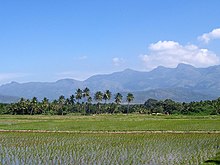






 Have you seen a square watermelon? look at the picture on the left side. I’m not kidding. This watermelon is being sold in Japan for around 10,000 yen ($83) while regular oval watermelon costs $15-$20. Quite expensive eh? here in the Philippines it won’t cost that much if you will grow it locally. There are abundant sources in the provinces but because of our poor transportation condition all of those supplies can’t reach metro manila in perfect condition and most of the time it cost higher than it suppose to be.
Have you seen a square watermelon? look at the picture on the left side. I’m not kidding. This watermelon is being sold in Japan for around 10,000 yen ($83) while regular oval watermelon costs $15-$20. Quite expensive eh? here in the Philippines it won’t cost that much if you will grow it locally. There are abundant sources in the provinces but because of our poor transportation condition all of those supplies can’t reach metro manila in perfect condition and most of the time it cost higher than it suppose to be. 

